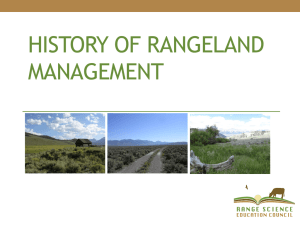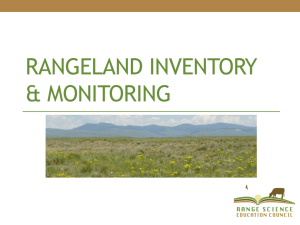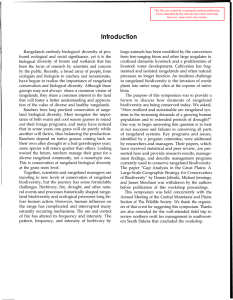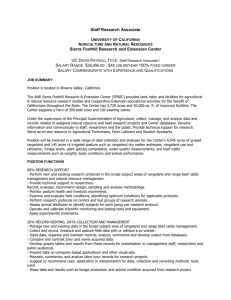October I !)!)5 REVIEWS 2339
advertisement
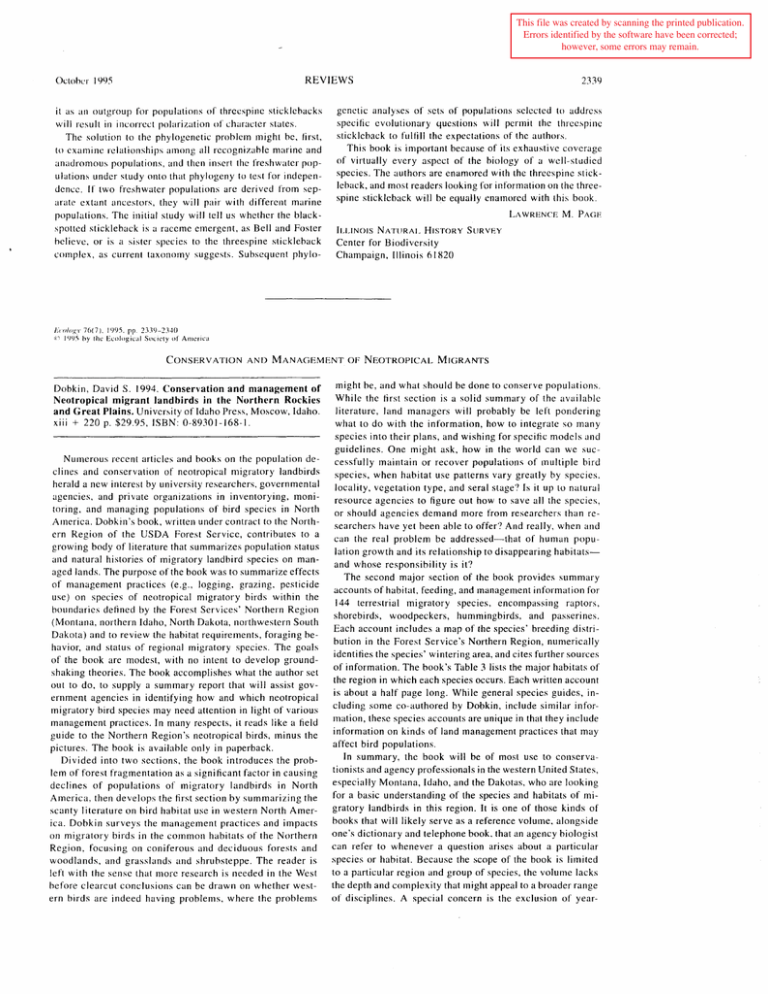
This file was created by scanning the printed publication.
Errors identified by the software have been corrected;
however, some errors may remain.
October I !)!)5
REVIEWS
it as an outgroup for populations of threcspine sticklcbacks
will result in incorrect polarization of character states.
The solution to the phylogenetic problem might be, first,
to examine rclationships among all rccognizable marine and
anadromous populations, and then insert the freshwater populations under study onto that phylogeny to test for independence. If two freshwater populations arc derived from separate extant ancestors, they will pair with differcnt marine
populations. Thc initial study will tell us whethcr the blackspottcd stickleback is a raceme emergent, as Bell and Foster
believe, or is a sister species to thc threespine stickleback
complex, as current taxonomy suggests. Subsequent phylo-
2339
genetic analyses of sets of populations selcctcd to addrcss
specific evolutionary questions \"ill pcrmit the threespinc
stickleback to fulfill the expectations of the authors.
This book is important because of its exhaustive covcrage
of virtually every aspect of the biology of a well-studied
species. The authors are enamored with the threespine stickleback, and most readers looking for information on the threespine stickleback will be equally enamored with this book.
LAWRENCE
M.
PAGE
ILLINOIS NATURAL HISTORY SURVEY
Center for Biodiversity
Champaign, Illinois 61820
"'('(llngl' 76(7). 1995. pp. 2339-2340
,i') 199,~ hy Ihe Ec()l()gical Sociely ()f America
CONSERVATION AND MANAGEMENT OF NEOTROPICAL MIGRANTS
Dobkin, David S. 1994. Conservation and management of
Neotropical migrant land birds in the Northern Rockies
and Great Plains. University ofIdaho Press, Moscow, Idaho.
xiii + 220 p. $29.95, ISBN: 0-89301-168-1.
Numerous recent articles and books on the population declines and conservation of neotropical migratory landbirds
herald a new interest by university researchers. governmental
agencies, and private organizations in inventorying, monitoring, and managing populations of bird species in North
America. Dobkin's book, written under contract to the Northern Region of the USDA Forest Service, contributes to a
growing body of literature that summarizes popUlation status
and natural histories of migratory landbird species on managed lands. The purpose of the book was to summarize effects
of management practices (e.g., logging, grazing. pesticide
use) on species of neotropical migratory birds within the
boundaries defined by the Forest Services' Northern Region
(Montana, northern Idaho, North Dakota, northwestern South
Dakota) and to review the habitat requirements, foraging behavior, and status of regional migratory species. The goals
of the book are modest, with no intent to develop groundshaking theories. The book accomplishes what the author set
out to do, to supply a summary report that will assist government agencies in identifying how and which neotropical
migratory bird species may need attention in light of various
management practices. In many respects, it reads like a field
guide to the Northern Region's neotropical birds, minus the
pictures. The book is available only in paperback.
Divided into two sections, the book introduces the problem of forest fragmentation as a significant factor in causing
declines of populations of migratory landbirds in North
America, then develops the first section by summarizing the
scanty literature on bird habitat use in western North America. Dobkin surveys the management practices and impacts
on migratory birds in the common habitats of the Northern
Region, focusing on coniferous and deciduous forests and
woodlands, and grasslands and shrubsteppe. The reader is
left with the sense that more research is needed in the West
before clearcut conclusions can be drawn on whether western birds are indeed having problems, where the problems
might be, and what should be done to conserve populations.
While the first section is a solid summary of the available
literature, land managers will probably be left pondering
what to do with the information, how to integrate so many
species into their plans, and wishing for specific models and
guidelines. One might ask, how in the world can we successfully maintain or recover populations of mUltiple bird
species, when habitat use patterns vary greatly by species,
locality, vegetation type, and seral stage? Is it up to natural
resource agencies to figure out how to save all the species,
or should agencies demand more from researchers than researchers have yet been able to offer'? And really, when and
can the real problem be addressed-that of human population growth and its relationship to disappearing habitatsand whose responsibility is it?
The second major section of the book provides summary
accounts of habitat, feeding, and management information for
144 terrestrial migratory species, encompassing raptors,
shorebirds, woodpeckers, hummingbirds, and passerines.
Each account includes a map of the species' breeding distribution in the Forest Service's Northern Region, numerically
identities the species' wintering area, and cites further sources
of information. The book's Table 3 lists the major habitats of
the region in which each species occurs, Each written account
is about a half page long. While general species guides, including some co-authored by Dobkin, include similar information, these species accounts are unique in that they include
information on kinds of land management practices that may
affect bird populations.
In summary, the book will be of most use to conservationists and agency professionals in the western United States,
especially Montana, Idaho, and the Dakotas, who are looking
for a basic understanding of the species and habitats of migratory landbirds in this region. It is one of those kinds of
books that will likely serve as a reference volume, alongside
one's dictionary and telephone book, that an agency biologist
can refer to whenever a question arises about a particular
species or habitat. Because the scope of the book is limited
to a particular region and group of species, the volume lacks
the depth and complexity that might appeal to a broader range
of disciplines. A special concern is the exclusion of year-
REVIEWS
2340
round resident birds from the book's coverage because it
leaves the impres~i()n that Lhey are of no concern or arc of
le~ser value than migrants. Other sources indicate that resident species in the western United States, especially those
using grasslands, may be having greater population problems
than neotropical migrants. Therefore, the best conservation
approach may be to assess all species in a particular area,
taking into account not only migratory status, hut as many
Ecology, Vol. 76, No.7
other useful factors that help to identify shared problems and
trends.
DEBORAH
M. FINCI!
USDA FOREST SERVICE
Rocky Mountain Forest and Range Experiment Station
2205 Columbia SE
Albuquerque, New Mexico H71 06
/'·({)/O,l('·. 76(7). IlJ,}) p. 2340
~.)
1(9) hy the
Ec()lo~ica'
Society of America
ECOLOGY AND RANGELAND MANAe,EMENT
Heady, Harold F., and R. Dennis Child. 1994. Rangeland
ecology and management. Westview Press, Boulder, Colorado. xvi + 519
p~
$59.85, ISBN: O-H 133-2052-6 (alk. paper).
Ecology is the fundamental scientific discipline of rangeland science which is the fundamental scientific discipline of
rangeland management technology. This linkage between
ecology and rangeland management is the underlying theme
of the book Range/and ecology and management. The authors
state in the Preface that the focus of the hook is "on the
ecology of rangeland grazing, practical management of animals. and vegetational manipulation. Part Four hrings these
together in the context of decision making for damaged land,
riparian and water conservation, multiple-use, and modeling." The book is a much expanded version of Dr. Heady's
460 page, 1975 text entitled Rangeland management.
Part One is suhtitJcd "Grazing Ecology" and includes 10
chapters. Suhject matters covered arc very broad with emphasis placed on introducing the reader to elementary ecological concepts as they relate to rangeland management.
Chapter titles are: "Rangeland Conservation," "Defoliation," "Physiological Effects of Defoliation," "Palatability,
Preference, and Selective Defoliation," "Physical Effects of
Grazing Animals," "Energy Flow and Nutrient Cycling,"
"Redistribution of Minerals by Plants and Animals," "Distribution of Plants by Animals," "Fire as an Environmental
Factor," and "Rangeland Synecology." Part Two is suhtitled
"Grazing Management" and consists of eight chapters focusing on the art and science of managing both domestic (i.e.,
livestock) and wild herbivores in a mix of rangeland environments. Chapter titles are: "Numhers of Animals," "Utilization of Forage," "Animal Distrihution," "Mixed Species
Grazing," "Mixed Species Management," "Seasonal Management." "Grazing Plans," and "Responses to Seasonal
Grazing Plans." Part Three is entitled "Vegetation Management" and consists of eight chapters. Subject matter focus is
on "using such tools as machines, chemicals, fire, and organisms to reduce undesirahle species and therehy encourage
desirable vegetation. New species may be seeded, and the
site improved by fertilization and water management." Chapter titles are: "Modification of Vegetation," "Mechanical
Control of Rangeland Plants," "Chemical Control of Rangeland Plants," ,. Prescribed Fire in Rangeland Management,"
"Biological Control," "Seeding of Rangelands," "Rangeland Fertilization," and "Soil and Water Conservation." The
final section consists of five chapters and is entitled "Man-
aging Rangeland Complexity." Subject matter focus is on
strategic and tactical planning strategies. Chapter titles are:
"Reclamation of Damaged Rangeland," "Riparian Areas and
Pollution: Best Management Practices," "Multiple Use,"
"Planning for Rangeland Management." and "Decision Support Systems."
As expected, this book is a classical rangeland management
textbook of considerable value to teaching professionals. The
chapters are a mix of the old (Heady, Harold F. 1975 Rangeland man([l-:ement. McGraw-Hili) and the new as reflected in
part from a review of each chapter's literature citations. For
example, of the 41 citations included in Chapter 6 ("Energy
Flow and Nutrient cycling"), only six have been published
since 1980. This is in contrast to Chapters 18 ("Responses
to Seasonal Grazing Plans") and 31 ("Decision Support Systerns") wherein 47 of 72 and 27 of 30 citations, respectively,
have been puhlished since 1980.
The content of several chapters are particularly noteworthy. Chapter 10 ("Rangeland Synecology") is a particularly
refreshing treatment of such fundamental ecolo[!ical concepts as succession, climax vegetation, range condition, and
trend. The authors do a commendable joh in presenting conflicting viewpoints (e.g., monoclimax vs. polyclimax successionary theory) in a cohesive, common sense manner.
Similarly, Chapters 17 ("Grazing Plans") and 18 ("Responses to Seasonal Grazing Plans") are skillful presentations of the merits, both real and perceived, of various grazing plans (i.e., grazing systems and strategies). Likewise,
Chapters 29 ("Multiple-Use"), 30 ("Planning for Rangeland Management"), and 31 ("Decision Support Systems")
introduce the reader to the newest of issues driving rangeland management technology.
In general, the authors' writing style is clear, concise, and
appropriate for a collegiate undergraduate textbook. In addition, the extensive use of bold print text is an effective
means of calJing attention to points of emphasis although ill
some chapters its use approaches excessive. Two noted distractions are the within and between chapters organization of
suhject matter and the general absence of high quality figures
and tables with this latter point frequently compounded by a
general absence of quality labels.
ROD HEITSCHMIDT
USDA-AGRICULTURAL RESEARCH SERVICE
Fort Keogh Livestock and Range Research Laboratory
Rt. I Box 2021
Miles City, Montana 59301


